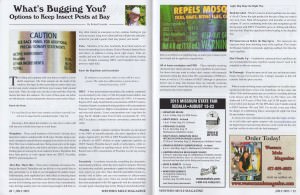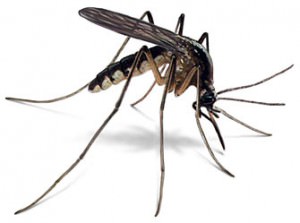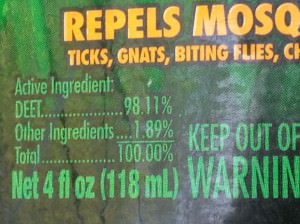 What’s Bugging You? – Keeping Pests at Bay
What’s Bugging You? – Keeping Pests at Bay
As Published in Western Mule Magazine, July 2015
Trail riding and camping with your horse is a wonderful experience. The fresh summer air. The smell of the outdoors. The bugs. It often seems that no matter where you are the local crawly creepies will find a way to annoy both you and your mule. There are steps you can take to prevent bites from the insects that share the outdoors. The worst of these pests can infect us with bacteria, viruses and parasites that can cause serious illness.
Know the Pests
“ It is said that if you know your enemies and know yourself, you will not be imperiled in a hundred battles” Sun Tzu
Knowing a little about the creatures we may have to deal with will arm you with the best ways to avoid them.
 Mosquitoes – These small members of the family Culicidae have long been a bane to outdoors folk of all types. Besides being a nuisance mosquitoes spread diseases ranging from yellow fever to the West Nile virus to malaria and more. Being most active at the edges of the day, dusk and dawn, and before and after a rain, these blood feeding pests are among the most studied of insects. Repellents that have been proven to work against are DEET, Picaridin, IR3535, and eucalypus oil.
Mosquitoes – These small members of the family Culicidae have long been a bane to outdoors folk of all types. Besides being a nuisance mosquitoes spread diseases ranging from yellow fever to the West Nile virus to malaria and more. Being most active at the edges of the day, dusk and dawn, and before and after a rain, these blood feeding pests are among the most studied of insects. Repellents that have been proven to work against are DEET, Picaridin, IR3535, and eucalypus oil.
Deer flies / Horse flies – These pests to humans and equines belong to the family Tabanidae and can deliver a very painful bite as they persistently try to feed on you throughout the midday hours. Unfortunately, most repellents have little effect in deterring these most annoying critters. Permethrin and Pyrethrin based sprays have proven to be irritating and may cause them to leave momentarily. Alas, the bugs usually aren’t in contact long enough to kill them so they often remain an annoyance as they continue feeding on you and your mount. Long sleeve shirts and hats will provide some protection for you and a quarter sheet may protect your mount.
Ticks – Members of the class Arachnida, these blood suckers are known for spreading Lyme disease, Rocky Mountain Spotted fever, and others, in addition to being down right creepy. Ticks are stealthy and won’t be a hassle until you find one silently feasting on you. Products containing DEET and Permethrin have been proven to repel ticks.
Know the Repellents and Insecticides
All substances are poisons; there is none which is not a poison. The right dose differentiates a poison from a remedy.(Paracelsus, 1567)
 DEET – A time tested and proven product, this synthetic compound was developed by the Army in 1946 for jungle bound soldiers and it has been the go to insect repellent since the 1950’s. A Consumer Reports 2015 study found that the concentration of DEET matters. Consumer Reports recommends using products with concentrations between 7 and 30 percent. Higher concentrations can cause rashes and even melt plastics. Lower concentrations won’t stop bites for long. The IU Health Center Travel Clinic recommends 20 –35% DEET to achieve a balance between convenience, protection and safety.
DEET – A time tested and proven product, this synthetic compound was developed by the Army in 1946 for jungle bound soldiers and it has been the go to insect repellent since the 1950’s. A Consumer Reports 2015 study found that the concentration of DEET matters. Consumer Reports recommends using products with concentrations between 7 and 30 percent. Higher concentrations can cause rashes and even melt plastics. Lower concentrations won’t stop bites for long. The IU Health Center Travel Clinic recommends 20 –35% DEET to achieve a balance between convenience, protection and safety.
 Picaridin – Another synthetic repellent, Picaridin was developed in the 1980’s to resemble piperine, the active ingredient in black pepper. Approved by the FDA in 2005 Picaridin has proven to be as effective as DEET without as many unpleasant qualities as DEET. Namely Picaridin doesn’t smell, or melt plastics, while remaining very effective at repelling insects. In the 2015 Consumer Reports test a 20% concentration of Picaridin was the top scoring product.
Picaridin – Another synthetic repellent, Picaridin was developed in the 1980’s to resemble piperine, the active ingredient in black pepper. Approved by the FDA in 2005 Picaridin has proven to be as effective as DEET without as many unpleasant qualities as DEET. Namely Picaridin doesn’t smell, or melt plastics, while remaining very effective at repelling insects. In the 2015 Consumer Reports test a 20% concentration of Picaridin was the top scoring product.
Permethrin – A synthetic insecticide resembling the chrysanthemum based pyrethrum, which has been used for centuries. The best tick protection available, permethrin is applied to fabrics (clothing, tents, tarps) not your skin. Once dried the permethrin bonds extremely well to fabric and can even maintain its effectiveness through multiple wash cycles. There are several lines of clothing that come pretreated (with FDA approval) with the chemical that are quite good at keeping bugs at bay. Being an insecticide permethrin is not effective at repelling bugs so some type of insect repellent should still be applied to exposed skin.
Oil of lemon eucalyptus and PMD – These naturally occurring chemicals have shown promise as insect repellents in recent tests. For those who may want to reduce their contact with manmade chemicals testing has shown that 20% concentration of PMD performs as well as a 15% solution of DEET although its protection doesn’t last as long. Just because these are naturally occurring chemicals doesn’t mean that they are side effect free. They are not and injuries have ben reported.
Apply Bug Dope the Right Way
 Read the Label – When it comes to insect repellents one size doesn’t fit all. Choose the right product for the type of bug you want to stay away from. Ward off mosquitoes with picaridin, or oil of eucalyptus. IF you’re combatting both ticks and mosquitoes go for the big guns with DEET. Permethrin goes on clothing and fabrics, not your skin. Read the ingredients before heading to the checkout line.
Read the Label – When it comes to insect repellents one size doesn’t fit all. Choose the right product for the type of bug you want to stay away from. Ward off mosquitoes with picaridin, or oil of eucalyptus. IF you’re combatting both ticks and mosquitoes go for the big guns with DEET. Permethrin goes on clothing and fabrics, not your skin. Read the ingredients before heading to the checkout line.
Put Sunscreen on Before the Bug Spray – The sunscreen can keep your body from absorbing some of the repellent. The Centers for Disease Control recommends applying sunblock first then the insect repellent.
Don’t Double Up – Combination sunscreen/insect repellents are not recommended because repellent usually doesn’t need to be reapplied as often as sunscreen.
Be Thorough – Keep the spray out of your eyes and mucous membranes, but get it everywhere else. A hungry mosquito or tick will certainly find the spots you miss.
When it comes to biting insects and repellents we’re really choosing between the lesser of two evils. Repellents can have nasty side effects. Ticks and mosquitoes put you at risk for everything between Lyme disease and the West Nile Virus. In 2012 there were 286 deaths and 5,674 cases of West Nile, and 24,364 people were infected with Lyme disease. Per the EPA there were 8 deaths related to DEET between 1961 and 2002. For me this is one area where the danger of a debilitating illness outweighs the slight risk from the preventative measure.
As always for more information on this and other topics of interest to trail riders and equine campers visit www.trailmeister.com the largest horse trail and camp directory in the world and the only one that verifies its data with the land managers!


